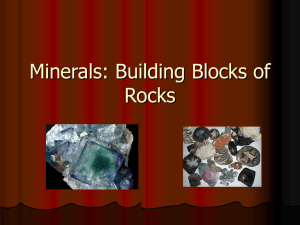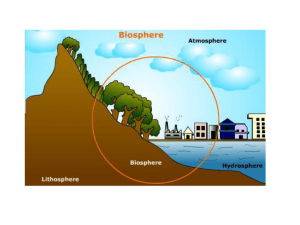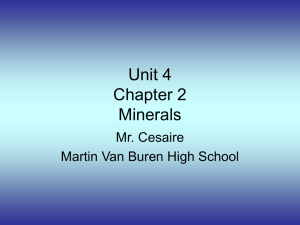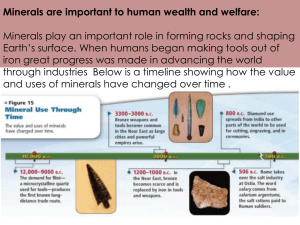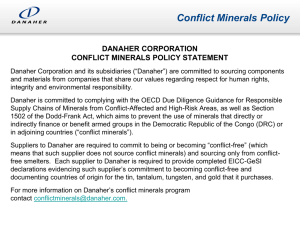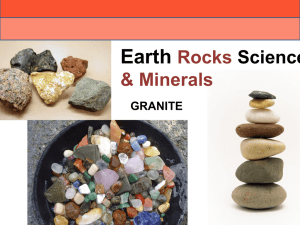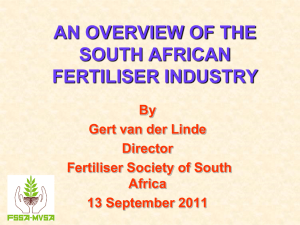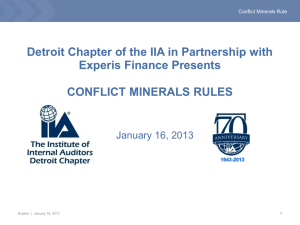File
advertisement
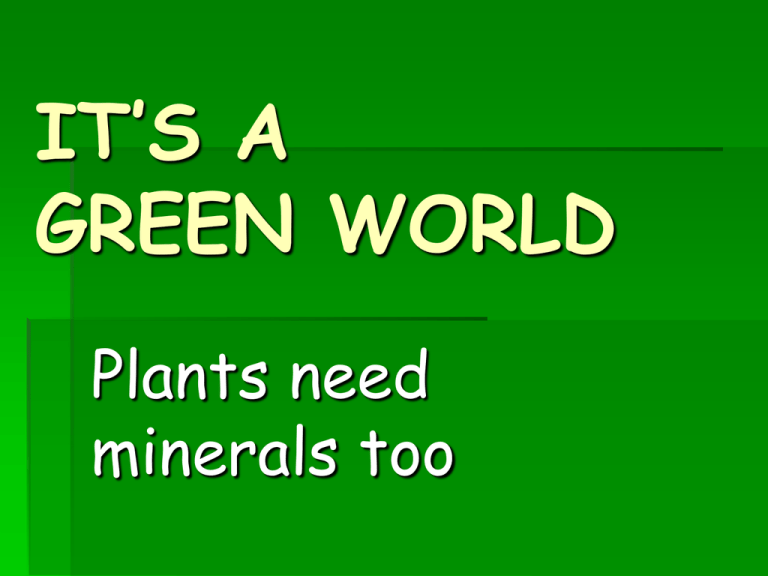
IT’S A GREEN WORLD Plants need minerals too Starter What is ‘slash and burn’ agriculture? What problems can arise from using this method? Plants need minerals too Learning objectives Understand that: The production of many important compounds by plants requires elements that are obtained from soil minerals Fertilisers contain minerals Success criteria Complete a table stating what how various minerals are used by plants Completion of worksheets on fertiliser usage What do plants need for a balanced diet? Plants need carbon dioxide and water for photosynthesis. Do they need any other nutrients to keep healthy? Just like humans, plants need a balanced diet that includes small amounts of mineral elements. What mineral elements do they need? What minerals do plants need? Plants need mineral elements for healthy growth. Some of the most important minerals needed by plants are: nitrogen nitrates phosphorus phosphates potassium potassium ions magnesium magnesium ions How do plants obtain these minerals? The mineral elements are found in salts dissolved in water. Plants obtain minerals when they absorb water from the soil. What type of salt are each of these elements found in? What are minerals needed for? Use p67 of the textbook to complete the table below Minerals How mineral is used in plants What happens to these minerals Nitrates Used to make proteins (for growth) Nitrogen is used to make amino acids which are then joined together to make different proteins Phosphates Used in respiration and growth esp in roots Phosphorus is used to make cell membranes and DNA ( which carries genetic information) Potassium compounds Used in respiration and photosynthesis Used to make some enzymes needed in respiration and photosynthesis Magnesium Used in photosynthesis compounds Used to make chlorophyll molecules Where do minerals come from? What are the sources of minerals in the soil? Rocks: The minerals in rocks are slowly dissolved by slightly acidic rainwater. These minerals are washed into the soil. Natural fertilizers: Animal faeces and the decay of dead plants and animals return minerals to the soil. Artificial fertilizers: These contain a ready-made mixture of the minerals needed by plants. Task - Fertilisers Complete worksheet B4d3 – Rothamsted experiment Extension – complete worksheet B4d2 Nitrogen fertilisers B4d3 – Rothamsted experiment As a control/comparison Potatoes do not need much nitrogen but wheat does Field 4; a fertiliser containing nitrogen, phosphorous and potassium would be expensive – the increase in crop yield may not justify the expense Soil type (clay, sand, chalk), drainage, aeration, climate conditions, pests, disease B4d2 – Nitrogen fertilisers 0.7 tonnes/hectare This uses ‘the law of diminishing returns’ – by doubling the amount of fertiliser from 0 to 50, the crop increases from 2.5 to 7 tonnes/hectare, almost three times the size If the amount of fertiliser is again doubled from 50 to 100 tonnes/hectare, the crop only increases from 7 to 8.4 tonnes/hectare It is tempting to state the highest amount of fertiliser, as this would give the largest crop, however by spending more and more money, the farmer’s increase in yield becomes less and less; the correct amount of fertiliser depends partly on its cost Most farmers would choose 50 kg of fertiliser/hectare Plenary Organic farmers do not use artificial fertilisers. Who would pay more for organic food and why? Plants need minerals too Learning objectives Understand that: The production of many important compounds by plants requires elements that are obtained from soil minerals Fertilisers contain minerals Success criteria Complete a table stating what how various minerals are used by plants Completion of worksheets on fertiliser usage


